Grindclaw ® the lab

Data from manual dexterity tests in combination with sEMG and thermography results have confirmed that usage of specific wrist support while playing certain games can improve distinct movements and performance of the gamer.
– Jelena Reste MD, PhD, associate professor, lead researcher, Institute of Occupational Safety and Environmental Health, Rīga Stradiņš University
.jpeg)
Medical testing and validation
In Autumn 2022 Grindclaw ergonomic gloves went through detailed tests at Laboratory of Ergonomics of Institute of Occupational Safety and Environmental Health of Rīga Stradiņš University (RSU) which is ranked 1st in the country, second in the Baltics region (Europe) and Top 800 globally according to World University Rankings 2023.
The methodology included 4 scenarios and 4 professional e-sports players - 2 men and 2 women. Playing with a bare hand and standard horizontal computer mouse without specific wrist support was used as a reference scenario. In addition for the Grindclaw glove, two other competing ergonomic wrist support products were tested as well.

Performed tests
Manual dexterity test
Manual dexterity test by AimLab program (Statespace, 2018) using AngleShot, FourShot, Suavetrack, Blinktrack, Swaayswitch and Dodgeswitch standardized tests to evaluate players performance using specialized gaming gloves;
Manual dexterity test
Manual dexterity test by AimLab program (Statespace, 2018) using AngleShot, FourShot, Suavetrack, Blinktrack, Swaayswitch and Dodgeswitch standardized tests to evaluate players performance using specialized gaming gloves;
Soft tissue test
Soft tissue compression and microcirculation test with medical high resolution digital infrared thermal camera to detect the compression of soft tissues and blood microcirculation in the wrist during 3 hours of intensive playing CS:GO & League of Legends computer games;
Soft tissue test
Soft tissue compression and microcirculation test with medical high resolution digital infrared thermal camera to detect the compression of soft tissues and blood microcirculation in the wrist during 3 hours of intensive playing CS:GO & League of Legends computer games;
Wrist skin moisture test
Wrist skin moisture test by measuring the TransEpidermal Water Loss (TEWL) of the palm, wrist basement and dorsal surface of the wrist to assess how breathable the Grindclaw gloves and other products are;
Wrist skin moisture test
Wrist skin moisture test by measuring the TransEpidermal Water Loss (TEWL) of the palm, wrist basement and dorsal surface of the wrist to assess how breathable the Grindclaw gloves and other products are;
Arm muscle electric activity test
Arm muscle electric activity test using surface electromyography (sEMG) of extensor carpi radialis longus muscle and extensor digitorum muscle bilaterally to test the muscle load dynamic of the gamers while playing 6 standard dexterity tests and a computer game.
Arm muscle electric activity test
Arm muscle electric activity test using surface electromyography (sEMG) of extensor carpi radialis longus muscle and extensor digitorum muscle bilaterally to test the muscle load dynamic of the gamers while playing 6 standard dexterity tests and a computer game.
Full test report (58 pages) is available here:
.jpeg)
Manual dexterity test
The effect of various products for support of the gamer’s wrist on fine motor skills was tested by Aimlab program (Statespace, 2018) in 4 esports professionals using 6 standardised tests following each other and 4 ergonomic scenarios on different days. The same computer mouse and mouse mat were used in all the tests. While playing, different products influenced certain movements in different ways (Figure 1). Improved gliding of the wrist with computer mouse was seen in GrindClaw glove and Carpio wrist support, but Carpio limited rotation and side movements of the wrist. Overall, playing with GrindClaw has shown a +14% increase in the total score which was the highest result compared with playing without any or using other products (Figure 2), i.e., improvement of fine motor function of the wrist was observed.
.jpeg)
Soft tissue compression and microcirculation test
Medical high resolution digital infrared thermal camera (ICI ETI 7320 Pro) with specialized program for thermal imaging analysis (IR Flash Medical Version 2.14.14.4.) was used to detect the compression of soft tissues and blood microcirculation in the wrist while using various products for gamer’s wrist for at least 3 hours of intensive playing. Due to prolonged sitting, sedentary behaviour, and reduced heat production by body muscles during 3-hour-long gaming, decrease in the wrist temperature in all test participants and all products tested was observed, starting from the second hour despite constant room temperature (Figure 3). On the other hand, slight increase of skin temperature above the forearm muscles was observed after prolonged gaming because of intensive load for forearm muscles.
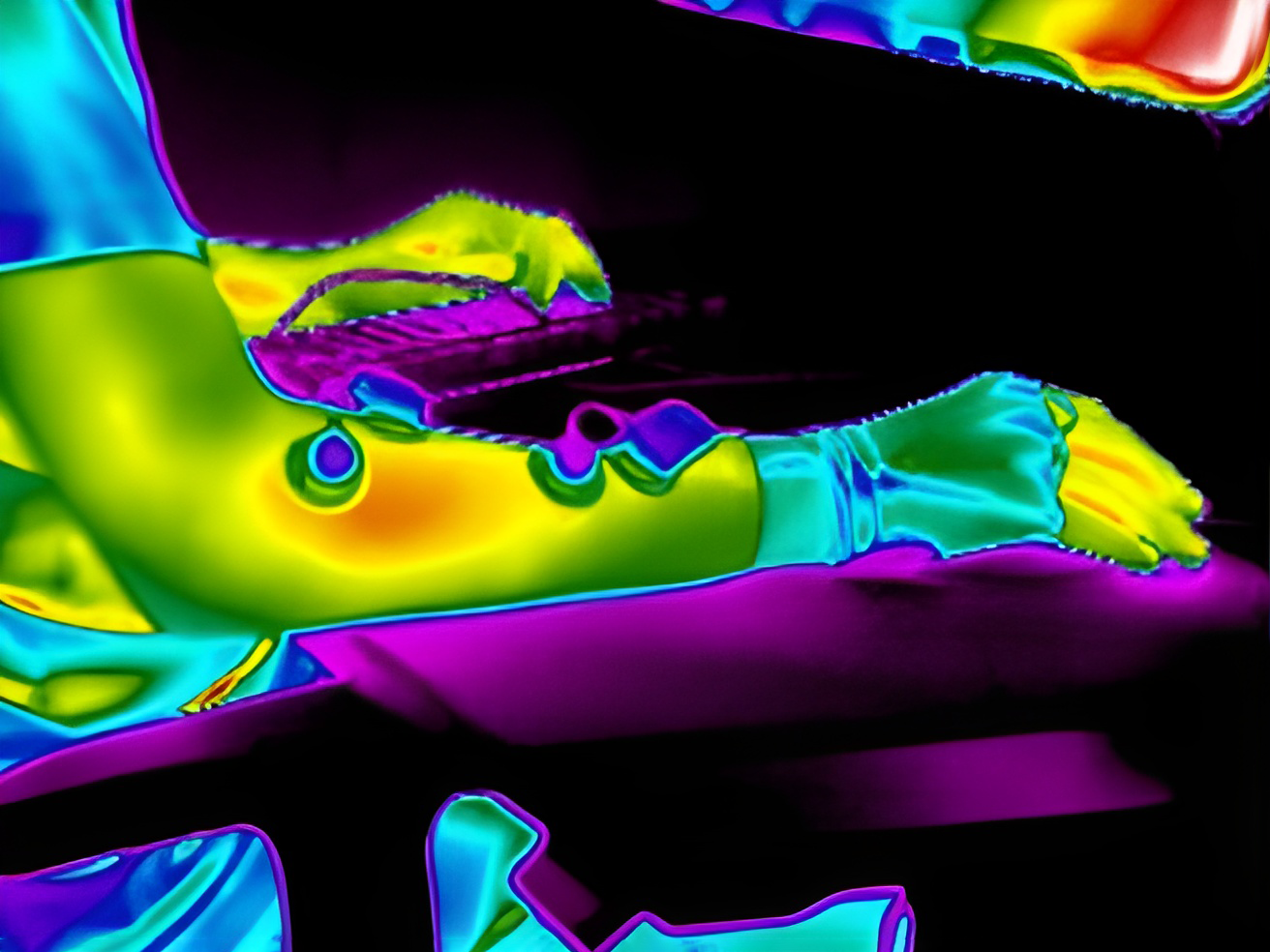

Infrared digital thermal imaging
Infrared digital thermal images indicating lower arm skin temperature changes while gaming for 3 hours and using Grindclaw in standard environmental conditions
It was found that Grindclaw glove of appropriate size doesn’t cause significant compression of the wrist tissues (Figure 4) and effect on peripheral microcirculation is comparable to playing just with computer mouse without any additional product. Besides, in playing without any product and supporting the wrist just on the table surface, compression of the wrist basement was even higher, but Grindclaw reduced this pressure. It can be concluded that Grindclaw is safe for blood circulation in the wrist during prolonged use.
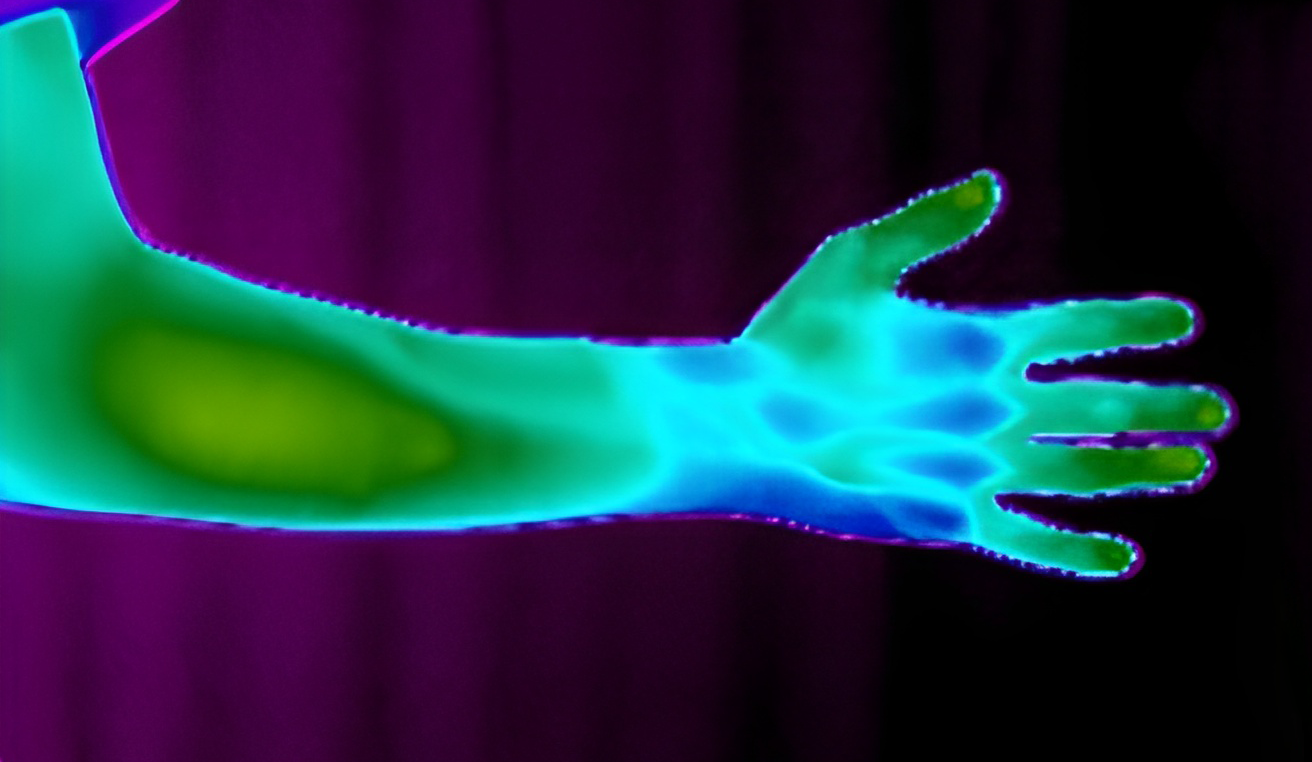
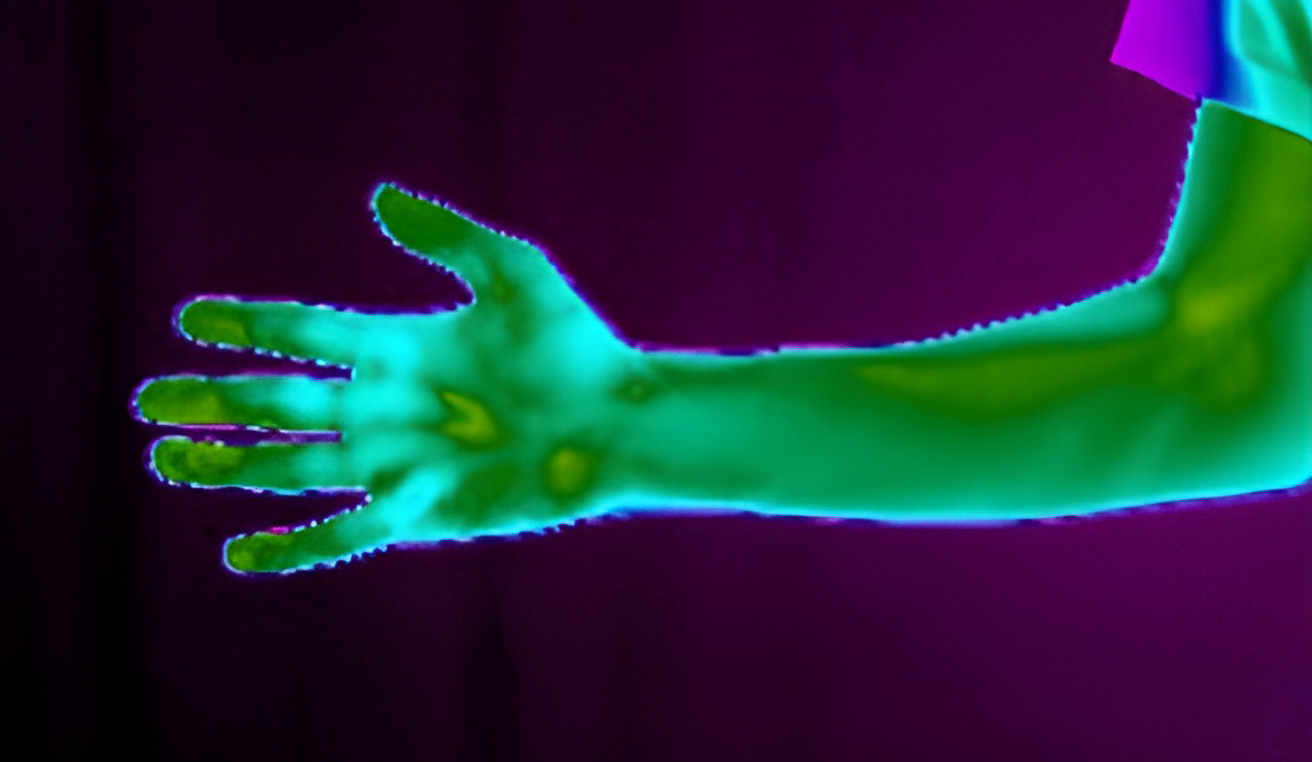
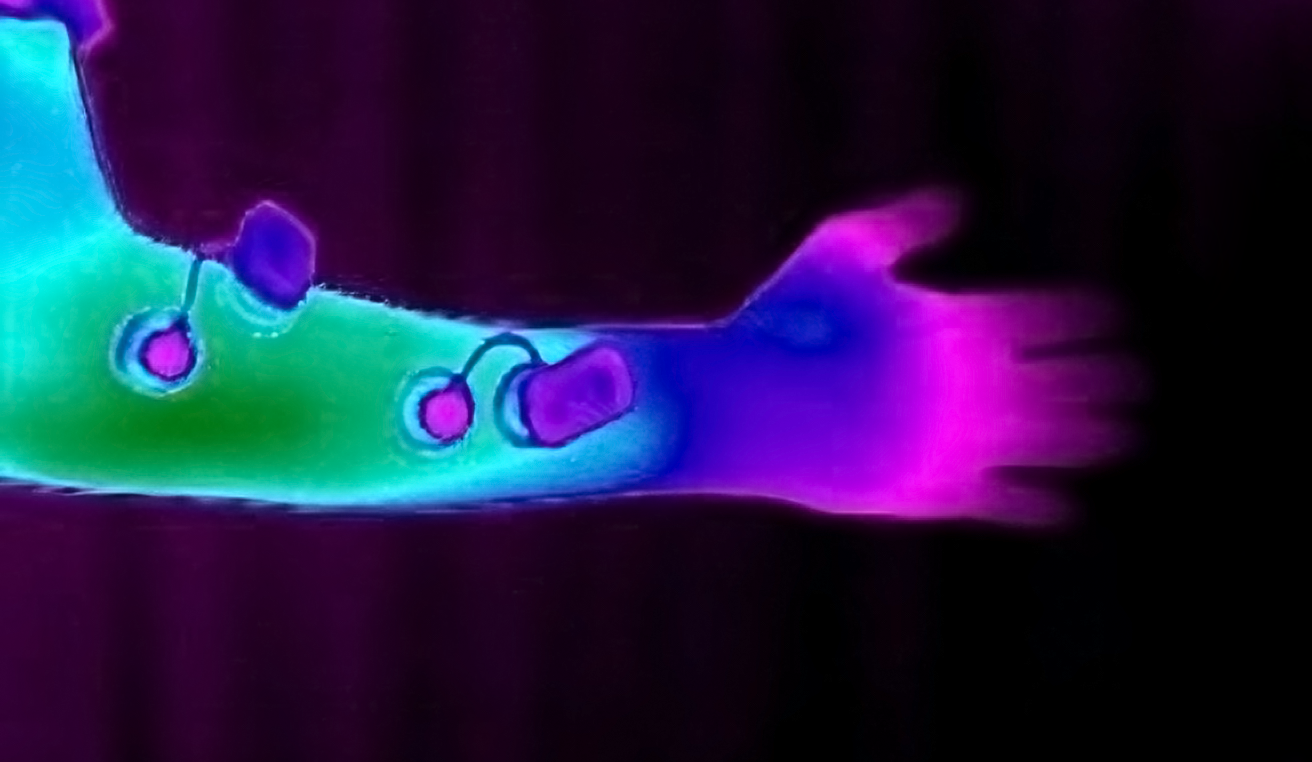

Compression sites on the palmar surface of the wrist after use of Grindclaw
Infrared digital thermal images indicating lower arm skin temperature before and after 3-hour-long gaming and Grindclaw use in standard environmental conditions (first row: before the test A. dorsal surface, B. volar surface of the lower arm and wrist; second row: after 3 hours C. dorsal surface, D. volar surface of the lower arm and wrist; colour scale on the right side shows corresponding temperature, ºC)

Wrist skin moisture test
Skin moisture (TEWL – TransEpidermal Water Loss) of the palm, wrist basement and dorsal surface of the wrist was measured by Tewameter TM 300 (Figure 5) to assess how breathable the gloves and other products for gamer’s wrist are. The measurements were taken before playing, every hour, and after 3 hours of intensive playing immediately after the removal of the glove. Wrist basement has shown the lowest skin moisture while using GrindClaw (Figure 6) comparing to other scenarios tested. Moisture of the dorsal surface of the wrist in GrindClaw was similar to that seen while using Carpio, where skin was uncovered. But overall, skin moisture of the wrist dorsal surface didn’t change significantly between different products tested.
Palm sweating increased during intensive playing (because sweating increases, when person is stressed) but decreased after rest periods (Figure 7). Figure 7 shows differences between palm moisture by products tested. Minimal increase of palm skin moisture was observed while using GrindClaw in comparison with other scenarios.
Overall, the tests have shown that GrindClaw material has good permeability for water vapours and doesn’t cause excessive sweating.
Scenario
1st hour
1st brake
2nd hour
2nd brake
3rd hour
1st hour
1st brake
2nd hour
2nd brake
3rd hour
1st hour
1st brake
2nd hour
2nd brake
3rd hour
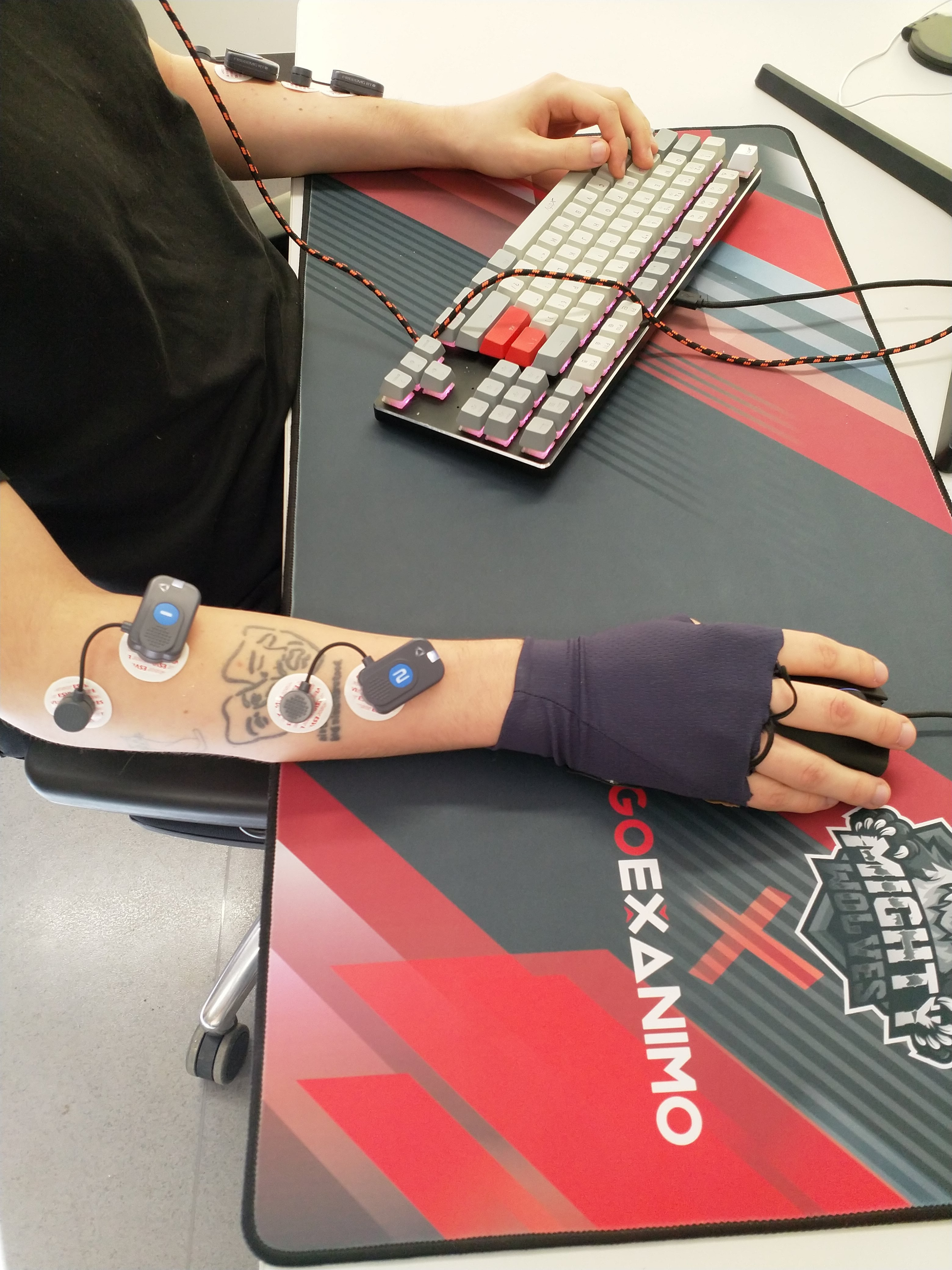
Wrist extensor muscle load test
Surface electromyography (sEMG) is a measurement of electric activity in skeletal muscles which is registered on the surface of the skin. This method provides an opportunity to objectively assess the extent of muscle contraction (i.e., tension and work produced in muscles). The higher the load applied to the muscle the higher voltage is registered on the surface of the skin above the corresponding muscle. Analysing sEMG data by manual dexterity tests (Figure 8), it can be concluded that significantly lower load for Right extensor carpi radialis longus (ECRL) muscle was revealed in Grindclaw tests in comparison with other scenarios.